Hydraulic cylinder - mode of operation and application
Hydraulic cylinders, also called working cylinders, are devices that convert hydraulic energy into mechanical motion. This conversion results in linear motion, which is why hydraulic cylinders are also called linear motors. The working pressure within the hydraulic system allows for large forces that can be controlled by hydraulic valves such as pressure relief valves. The operating speed depends on the flow volume and the piston area.
Content
The main components of a hydraulic cylinder are the cylinder body, which usually consists of a tube, and a piston rod with a piston. The cylinder body is usually made of seamless steel tube.

Inside the cylinder body, which is designed for the maximum system pressure, the working piston moves with the piston rod. The direction of movement depends on whether the fluid is supplied from the rod side or from the bottom side, resulting in an inward or outward movement. The fluid displaced on the opposite side of the piston is normally returned to the reservoir. The piston, which is fitted with seals, separates the two cylinder chambers and minimizes internal leakage. The cylinder body is closed at the ends with cylinder covers which are either bolted on, welded on or braced with tie rods. These covers house the hydraulic connections, the end-position cushioning and the piston rod guide with the piston rod seals.
The piston rod seals largely prevent hydraulic fluid from escaping from the cylinder and dirt particles from entering the hydraulic system. Small imperfections can occur on the surface of the piston rod, causing fluid to remain in the depressions and potentially introduce debris into the hydraulic system. The design of the piston rod surface greatly reduces this effect, at least in new equipment.
Advantages of hydraulic cylinders
Hydraulic cylinders are a very common component in hydraulic systems:
- The use of hydraulic cylinders as direct drives is simple in design and can be easily positioned by the machine builder.
- By eliminating the need to convert a rotary motion into a linear motion, the cylinder drive offers high efficiency.
- A hydraulic cylinder can keep its maximum cylinder force constant from the beginning to the end of the stroke. A simple limitation of the lifting force can be achieved by a pressure valve.
- The piston speed in a hydraulic cylinder depends on the flow volume and the effective piston area. With a constant delivery volume, the piston speed also remains constant from the beginning to the end of the stroke.
- Depending on the design, a hydraulic cylinder can generate only compressive forces or both compressive and tensile forces.
- By appropriately dimensioning hydraulic cylinders, powerful drives can be realized with small installation dimensions.
Hydraulic cylinders are mainly used for lifting, lowering, locking and shifting loads.
Types of hydraulic cylinders
Single acting hydraulic cylinders
Single-acting cylinders are designed so that only one side of the piston is pressurized with hydraulic fluid. This means that they can only perform work in one direction. The reset is performed either by an external force, by its own weight or by a separate spring. A special form are plunger cylinders, in which the piston rod surface alone determines the lifting force. Under the same conditions, they produce a lower lifting force than cylinders with disc pistons, but have better mechanical efficiency. Since this design eliminates the additional guidance provided by the piston, external axial guidance of the entire system is essential.
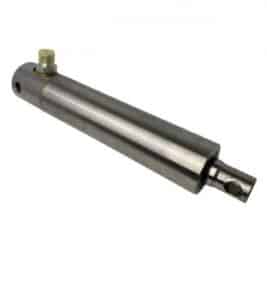
Telescopic cylinder
Telescopic cylinders are a type of cylinder in which several pistons arranged one behind the other are extended or retracted telescopically. This design allows only a discontinuous working speed. The telescopic pistons are lowered either by their own mass or by an external force. Telescopic cylinders are available in single-acting and double-acting versions. They are used in confined spaces or very long working lengths.
Synchronized telescopic cylinders have a special design in which the cylinder spaces of the individual stages are connected by additional cylinder ring spaces. Thus, a constant area is realized for each cylinder stage. As a result, all pistons are moved simultaneously and at a constant speed without pressure or speed shocks.
Double acting hydraulic cylinders
Double-acting hydraulic cylinders, which are used in many applications, have two piston surfaces to which hydraulic fluid can be applied. This allows work to be carried out in both directions of movement. The cylinder is often controlled by 4/2 or 4/3 directional control valves.
Depending on the working direction, either the entire piston surface or only the ring surface is exposed to pressurized liquid. This means that the achievable piston forces for p=const. and the feed rates for Q=const. are not equal in the two directions of movement of the cylinder.
Cylinders with piston rods on both sides (synchronized cylinders) represent a special case, in which only the ring surface is pressurized with pressure fluid, depending on the working direction. As a result, the cylinder has the same properties in both directions of motion. These cylinders are often used in machine tools or as steering cylinders in mobile machinery.

Mounting types
Hinged eye mounting: Here, joint eyes are attached to both ends of the cylinder. These joint eyes have holes through which bolts or can be guided.
The articulated eye mounting provides more flexibility when mounting the hydraulic cylinder. It allows some freedom of movement and alignment of the cylinder in the application. Small angular deviations or inaccuracies can be compensated for by rotating the articulated eyes.
Swivel eye mounting: Swivel eye mounting is a common method of mounting hydraulic cylinders. It allows the cylinder to rotate or pivot during extension and retraction. This can be useful when the cylinder is used in an application that requires some mobility or flexibility, such as certain types of machinery or vehicles. A common method of attachment is by means of so-called clevises:
These have a fork shape and can be used to fix a cylinder in a certain position while allowing it some mobility.
Flange mounting: With flange mounting, the cylinder head of the hydraulic cylinder is attached directly to the machine or implement with a flange plate or flange ring. This method provides a stable and secure connection between the cylinder and the application.
Threaded mounting: Some hydraulic cylinders have threaded holes in the cylinder head that allow the cylinder to be mounted directly to a corresponding threaded hole in the application. This method provides a strong connection and does not require additional fasteners such as flanges or bolts.
Hydraulic cylinders are available in our hydraulic store
In our hydraulic store you will find a wide range of hydraulic cylinders and accessories.
All articles on the subject of hydraulic cylinders
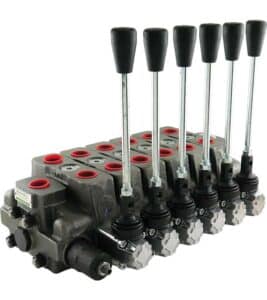
Mobile control block
In the field of mobile machinery, there are special requirements for valve technology. Control blocks for mobile applications have significant differences to hydraulic valves in
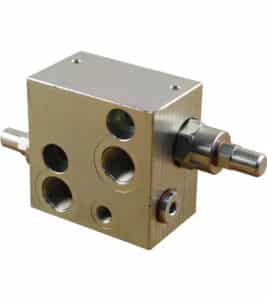
Hydraulics lowering brake valves
Hydraulic lowering brake valves – safety device in hydraulic systems Counterbalance valves are hydraulic valves consisting of pilot-operated check valves and associated throttling and damping
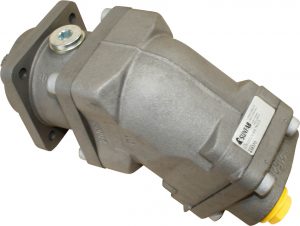
axial piston engines
Axial piston motors – for high speeds Functionality of axial piston motors Axial piston motors are based on the basic principle of an axial piston
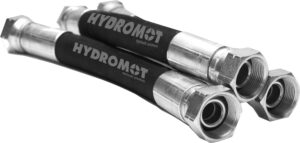
Calculate hydraulic line
Content Calculate hydraulic line: step-by-step guide for accurate calculation Hydraulic lines are an important component of hydraulic systems and are used to transfer pressurized fluids.
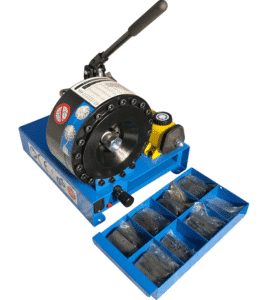
Manual hydraulic hose press
How to press a hydraulic hose with a manual hydraulic hose press? In our video you will also find step by step instructions In 7
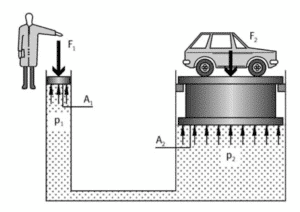
How do hydraulics work?
Hydraulics is a fascinating principle that is used in many areas of technology. But how exactly do hydraulics work and what are they used for?